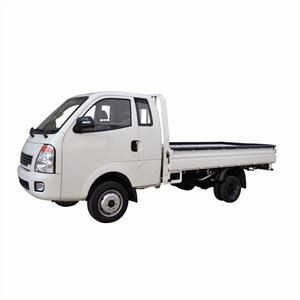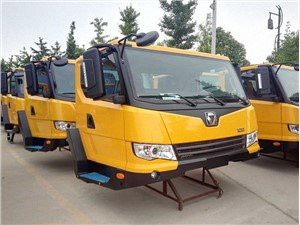Discovering New Ways in Equipment: Innovations and Trends

Introduction to New Way Equipment
The landscape of equipment across various industries is evolving at an unprecedented pace. As businesses seek higher efficiency, sustainability, and technological breakthroughs, new ways of utilizing equipment are emerging. This article explores the latest innovations in equipment technology, their benefits, practical applications, and how they can revolutionize operations in different sectors.
1. Understanding New Way Equipment
New way equipment refers to the innovative tools, machines, and devices developed to improve performance, enhance efficiency, and adapt to modern challenges. This section delves into the definition, significance, and general characteristics of these innovations.
1.1 Definition of New Way Equipment
New way equipment encompasses any novel tools or machinery that facilitate improved processes in industries such as manufacturing, construction, healthcare, and logistics. These tools often integrate advanced technologies like IoT (Internet of Things), AI (Artificial Intelligence), and robotics.
1.2 Importance of New Equipment
Adopting new equipment is crucial for businesses aiming to stay competitive. It offers advantages such as:
- Increased productivity
- Cost savings through efficiency
- Improved safety standards
- Enhanced product quality
2. Trends in New Equipment Technology
This section will explore current trends shaping the equipment landscape, focusing on technological advancements and their implications for various industries.
2.1 Automation and Robotics
The rise of automation has transformed industries. Robotics enable tasks to be performed with precision and consistency, reducing human error.

Example: Many manufacturing companies now deploy robotic arms for assembly lines, which increases output while minimizing labor costs.
2.2 IoT Integration
IoT technology connects equipment to the internet, allowing real-time monitoring and data analysis. This integration facilitates predictive maintenance and maximizes uptime.
Example: Smart sensors in industrial machines can alert operators to potential failures before they occur, significantly reducing maintenance costs.
2.3 Sustainable Equipment Solutions
With environmental concerns on the rise, sustainable equipment is becoming a priority. Companies are developing machines that consume less energy and produce fewer emissions.
Example: Electric forklifts are gaining popularity due to their environmental benefits compared to traditional gas-powered models.
3. Industry-Specific Applications of New Way Equipment
Different industries utilize new way equipment to tackle unique challenges and improve operations. This section highlights several key sectors and the innovations they embrace.
3.1 Manufacturing
Manufacturing has seen a shift toward smart factories, where new way equipment enhances every aspect of production.
- 3D printing for prototyping and product development.
- Automated Guided Vehicles (AGVs) for material transport.
3.2 Healthcare
In healthcare, advanced diagnostic equipment and robotic surgery tools are transforming patient care.
Example: Robotic-assisted surgical devices allow surgeons to perform procedures with greater precision.
3.3 Construction

In construction, new equipment is enhancing safety and efficiency on-site.
- Drone technology for surveying and mapping.
- Augmented reality tools for project visualization.
4. The Role of Software in New Equipment
Software has become a crucial component of modern equipment, enabling advanced features and functionalities.
4.1 Control Systems
Control systems allow for the manipulation and monitoring of machinery, leading to better operational efficiency.
4.2 Management Software
Equipment management software helps companies track usage, schedule maintenance, and optimize resources.
Example: Asset management platforms provide insights into equipment performance and lifecycles.
5. Challenges in Adopting New Equipment
While the benefits of new way equipment are evident, businesses face several challenges when implementing these innovations.
5.1 High Initial Costs
Investing in new technologies can be daunting for many businesses, especially small to medium enterprises.
5.2 Training and Skill Gaps
Employees may require training to operate new equipment effectively, which can be a time-consuming process.
5.3 Integration with Existing Systems
Integrating new equipment with legacy systems can lead to operational disruptions and additional costs.
6. Practical Tips for Implementing New Way Equipment
This section offers actionable insights for businesses looking to adopt new equipment successfully.
6.1 Conduct a Needs Assessment

Before investing in equipment, businesses should evaluate their specific needs and how new technologies can address them.
6.2 Start with Pilot Programs
Implementing a pilot program can help businesses assess the effectiveness of new equipment before full-scale adoption.
6.3 Focus on Employee Training
Investing in training programs will ensure employees are prepared to utilize new technologies effectively and minimize resistance to change.
7. Case Studies of Successful Implementations
Examining real-life examples can provide valuable insights into the successful adoption of new equipment.
7.1 Manufacturing Triumphs
A leading automobile manufacturer successfully integrated robotics into its assembly line, resulting in a 30% increase in production efficiency.
7.2 Healthcare Enhancements
A hospital introduced telemedicine equipment, allowing healthcare professionals to reach people in remote areas, increasing patient engagement and care quality.
8. The Future of New Equipment
The evolution of new way equipment is far from over. Innovations will continue to emerge, driven by advancements in technology and shifts in consumer demand.
8.1 Anticipated Technological Innovations
Future breakthroughs may include more advanced AI capabilities, smarter IoT devices, and revolutionary battery technologies.
8.2 Shifting Market Demands
As sustainability remains a priority, businesses will increasingly seek equipment that balances performance and environmental responsibility.
9. Frequently Asked Questions (FAQs)
9.1 What is new way equipment?
New way equipment refers to innovative tools and machinery designed to enhance efficiency and productivity across various industries.
9.2 How do I choose the right new equipment for my business?
Identify your specific needs, conduct market research, and consider piloting new technologies before making a larger investment.
9.3 What are the benefits of adopting new equipment?
Benefits include increased productivity, cost savings, improved safety, and enhanced product quality.
9.4 Are there any downsides to new way equipment?
Challenges include high initial costs, the need for employee training, and potential integration issues with existing systems.
9.5 How can I ensure a smooth transition to new equipment?
Conduct a needs assessment, start with pilot programs, and invest in comprehensive training for staff to facilitate a smooth transition.
9.6 What industries benefit the most from new way equipment?
Industries such as manufacturing, healthcare, construction, and logistics benefit significantly from the adoption of new equipment technologies.
